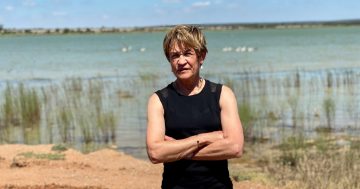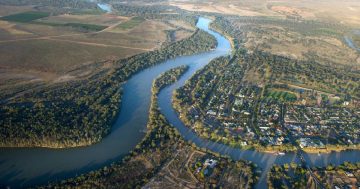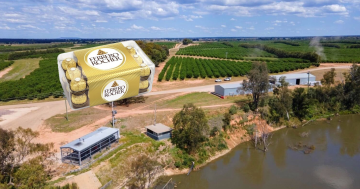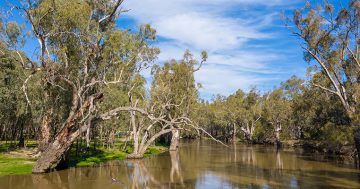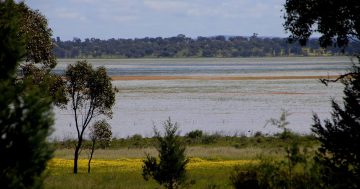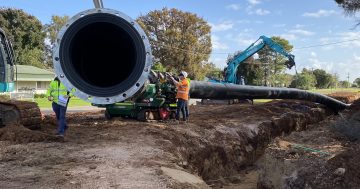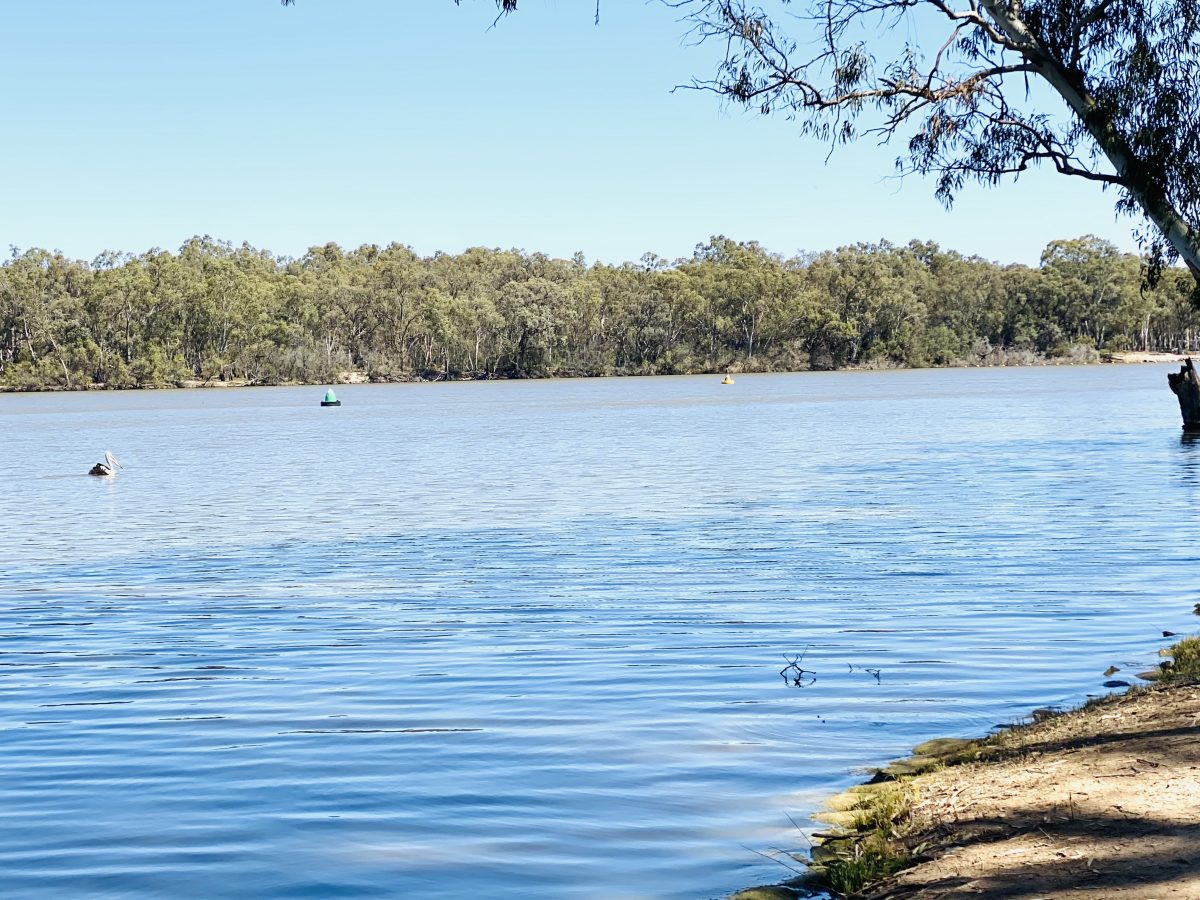
The Murray-Darling junction in Wentworth. Photos: Oliver Jacques.
There are fears a new law enabling the buyback of more water from irrigators could cost taxpayers up to $10 billion and lead to the flooding of private properties along the Murray River as more water is pushed downstream.
The Federal Labor Government’s Restoring Our Rivers Bill was passed by the Senate late last year. This paved the way for it to become new legislation that allows for the recovery of 450 gigalitres of water for the environment each year by December 2027, including by buying back water licences directly from farmers so that the water can be left to flow down the river.
Critics have posed two questions that have not been answered by the government: how much will this cost taxpayers, and how will the extra water be delivered downstream without hitting physical constraints in the river and flooding onto private properties?
Argyle Capital Partners, an investment firm that holds large quantities of water within the Murray-Darling Basin, claims the cost to taxpayers could be enormous.
“Based on our knowledge of the value of water for irrigation farming, and the nature of irrigation farm businesses today, we believe a buyback to achieve 450 gigalitre LTAAY (long-term average annual yield) may require up to $10 billion in taxpayer funding. It represents a massive expense for limited benefit,” the firm wrote in a submission to a Senate inquiry on the new bill.
Region asked the Federal Department of Climate Change, Energy, the Environment and Water – the government agency that will administer buybacks – whether it agreed with or disputed the $10 billion figure. The department refused to respond.
We also asked the department what the estimated cost to taxpayers of recovering 450 gigalitres of water for the environment would be, but there was no response to that question either.
Instead, a department spokesperson provided the following statement.
“Voluntary water purchase is only one planned part of the Australian Government’s commitment to deliver the Murray-Darling Basin Plan in full. We are continuing to work with Basin states and territories on the design and delivery of water recovery programs and vital water saving infrastructure to help deliver 450 gigalitres (GL) of water for the environment.”
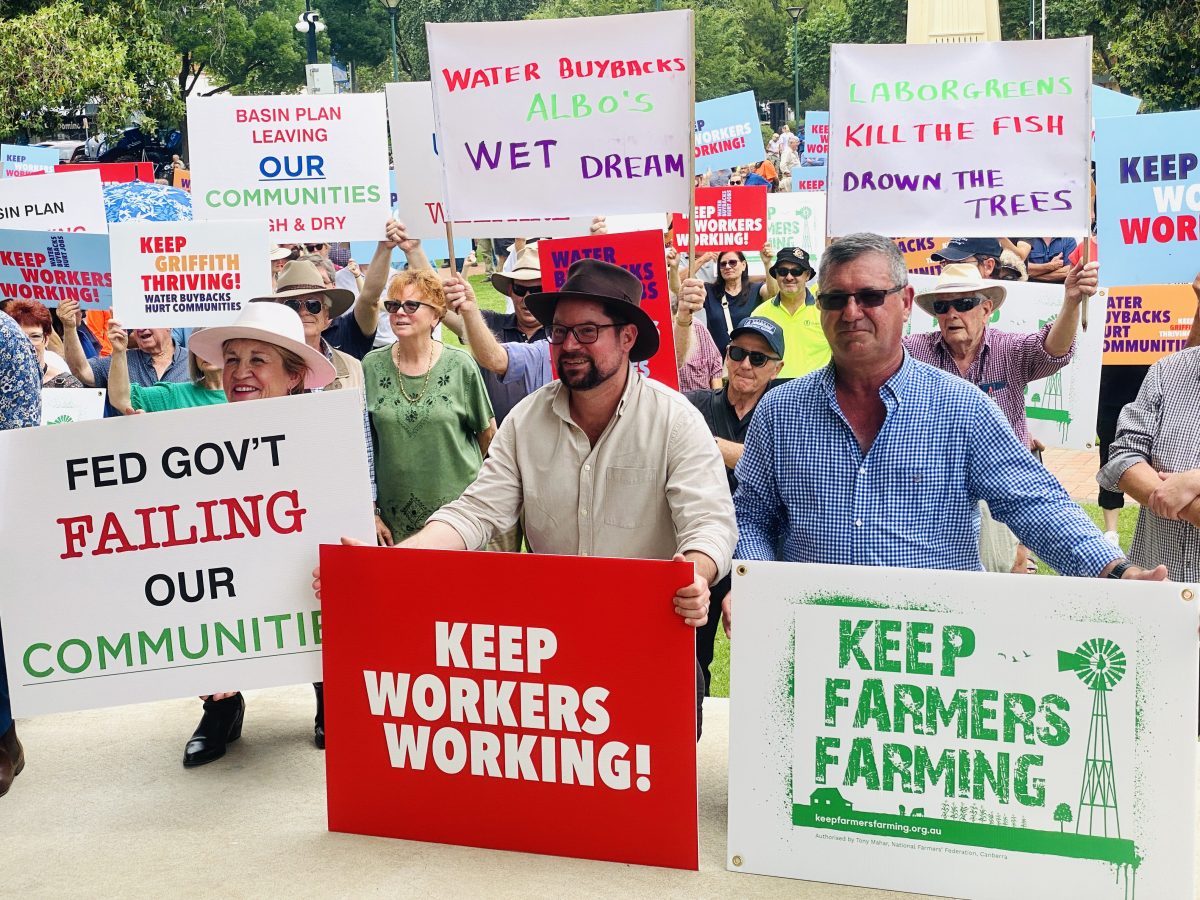
The signs tell the story of how Griffith protesters view the water buybacks.
Region also asked how the government will remove river constraints, such as choke points, low-lying bridges, crossings and private land, to ensure the extra water can flow down the river and meet water recovery targets.
The department refused to answer that question too.
In a November 2023 article for the publication The Conversation, water experts Avril Horne and Andrew John wrote: ”Currently, we cannot physically deliver all of the water recovered from other uses for the environment (known as environmental water) to where it’s needed without flooding private property along the way.”
National Party Cootamundra state MP Steph Cooke has criticised what she calls the “secrecy” on how the revised Murray-Darling Basin Plan will be delivered by the state and federal Labor governments.
“How is it possible that there is no paper trail? That there is not even so much as a meeting brief, or meeting minutes, a submission or proposal; basically anything that formalises the deal, or sets out some terms and conditions,” she said.
“Is it truly the case that this NSW Labor Government agreed to a revised Murray-Darling Basin Plan, that supposedly provides more time for water delivery, and $700 million for water projects, without any kind of contractual paperwork?
“This kind of obfuscation would be farcical if it wasn’t so very deeply concerning; lives and livelihoods hang in the balance over what happens next in regard to how this government meets its water targets, and it appears we don’t even have so much as an understanding scribbled on the back of an envelope.”
While no costings or planning details have been released publicly, the Federal Government has indicated it ” will consider value for taxpayer dollars” when purchasing water through buybacks.
In the past, both Coalition and Labor governments have been criticised for spending exorbitant amounts on irrigation water purchases.








